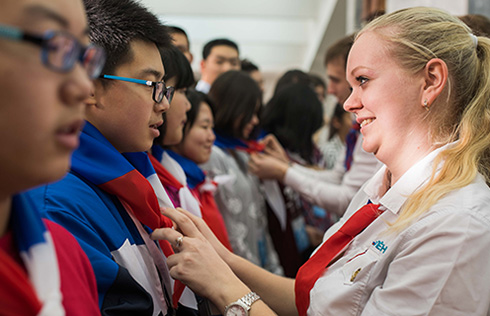Genes of mice used to make lean pork
Scientists from China and the United Kingdom have successfully used gene editing to make pigs leaner, improving their overall health and making them cheaper to feed.
A team from the Chinese Academy of Sciences in Beijing used CRISPR/Cas9 gene editing technology to introduce genes from mice into pig embryos, resulting in young with 24 percent less body fat.
Pigs carry white fat - or lard - and are not capable of producing brown fat, which is better for insulation. The scientists used special proteins to insert mice genes involved in the production of brown fat into pig embryos.
The Chinese researchers successfully reared 12 piglets that carried the new gene.
They found the modified pigs stayed warmer in cold temperatures. Brown fat takes less energy to create so the pigs need less food to grow.
"Pork is the number one meat consumed in China, so it's an important industry," said Zhao Jianguo, a researcher at the Chinese Academy of Sciences and an author of the report. "China spends a lot of money trying to improve economic production and efficiency in the pig industry."
In the CRISPR/Cas9 system, special proteins act as a molecular "copy and paste" tool, targeting precise areas of DNA and removing or inserting genes.
Scientists have observed such proteins at work in the natural world for decades, and were first able to artificially replicate the system in human cell cultures three years ago.
The new research was published in the journal Proceedings of the National Academy of Sciences of the United States.
John Speakman and Catherine Hambly of the UK's Aberdeen University were involved in testing activity and energy consumption in the piglets.
The sale of animals that have undergone gene editing is not yet licensed in China, though Zhao said the cutting-edge technology could become commonplace.
Many crops, including the majority of the world's soy and maize, are now genetically modified after techniques were first developed in the 1980s, Zhao noted.
China accounts for half of all global pork consumption. It is restructuring the sector to boost domestic supply. Imports of pork have grown at an annual rate of 150 percent since 2007.
angus@mail.chinadailyuk.com
(China Daily 11/02/2017 page1)



























